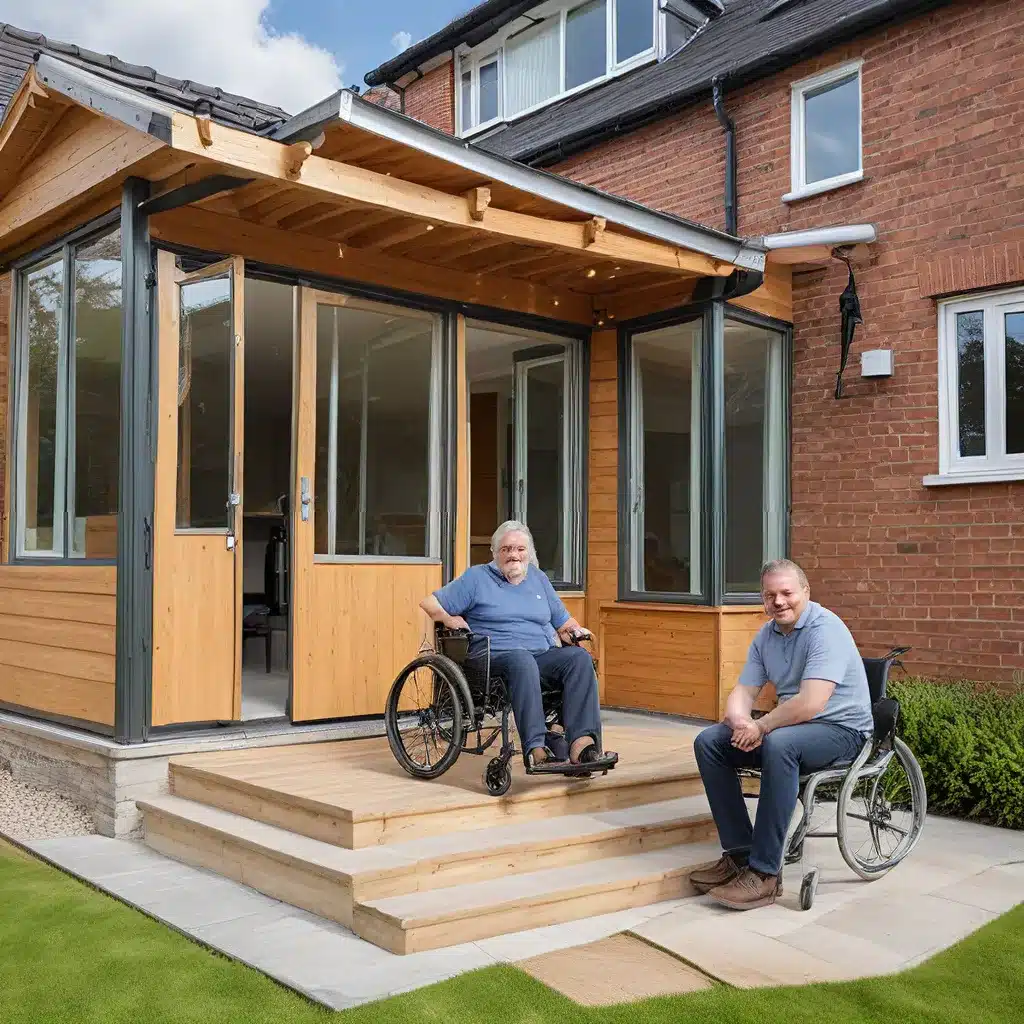
Embracing the Challenge: Making Homes Accessible for All
As someone deeply passionate about improving the lives of individuals with disabilities, I’ve always been fascinated by the role that home design and modifications can play in fostering greater independence and inclusion. The topic of accessible home extensions is particularly close to my heart, as it represents a powerful intersection of innovation, empathy, and social progress.
It’s a sobering fact that many homes in the UK, including here in Aberdeen, simply aren’t designed with the needs of individuals with disabilities in mind. Narrow doorways, steep stairs, and inaccessible bathrooms can pose significant barriers, limiting a person’s ability to move freely and comfortably within their own living space. This, in turn, can impact their overall quality of life, social engagement, and even employment opportunities.
But what if we could change that? What if we could transform these homes into oases of accessibility, where people of all abilities could thrive? That’s the exciting challenge that lies ahead, and it’s one that I’m eager to tackle.
Rethinking Home Design: The Principles of Inclusive Living
At the heart of accessible home design lies a fundamental shift in mindset – moving away from a one-size-fits-all approach and instead embracing the diversity of human experiences and needs. This means considering the full spectrum of abilities from the outset, rather than trying to retrofit solutions after the fact.
One of the key principles of inclusive living is universal design – the concept of creating environments, products, and services that are usable by all people, to the greatest extent possible, without the need for adaptation or specialized design. This might include features like:
- Wide doorways and hallways to accommodate wheelchairs and mobility aids
- Adjustable countertops and sinks that can be used by individuals of varying heights
- Slip-resistant flooring and grab bars in bathrooms for added safety and stability
But universal design goes beyond just physical accessibility. It also means addressing sensory and cognitive needs, such as:
- Contrasting colors and high-visibility signage to aid those with visual impairments
- Acoustic design that minimizes distracting noises and echoes
- Intuitive, user-friendly controls for lighting, heating, and other home systems
By incorporating these principles into the design process from the very beginning, we can create homes that are truly welcoming and empowering for everyone.
The Transformative Power of Home Extensions
While incorporating accessibility features into new construction is essential, the reality is that many of the homes in our communities were built decades ago, long before these inclusive design concepts became mainstream. This is where home extensions can play a vital role in enhancing accessibility and improving the quality of life for individuals with disabilities.
Home extensions offer a unique opportunity to tailor the living space to the specific needs of the occupants, whether that’s a spacious bedroom and en-suite bathroom for a person who uses a wheelchair, or a sensory-friendly living room for a child with autism. By thoughtfully designing and integrating these extensions, we can create seamless, integrated living environments that foster a greater sense of independence and community participation.
ABC Home’s home extension and conversion services can be a valuable resource in this regard, as they specialize in crafting customized solutions that cater to the unique needs of each individual. Their team of experienced designers and builders work collaboratively with clients to understand their specific requirements and translate those into reality, ensuring that the final result is a truly transformative and life-enhancing living space.
Overcoming Challenges and Fostering Inclusion
Of course, the journey towards truly inclusive home design is not without its challenges. There can be financial hurdles, as the costs of specialized features and custom modifications can quickly add up. Additionally, there may be regulatory and zoning obstacles to navigate, depending on the location and the scope of the project.
However, I firmly believe that these challenges are surmountable when we approach them with a collaborative and innovative mindset. By engaging with local authorities, disability advocacy groups, and forward-thinking home improvement companies, we can identify creative solutions, access funding opportunities, and streamline the process of creating accessible living environments.
Moreover, the societal benefits of promoting inclusive home design are immeasurable. When we invest in making our homes more accessible, we’re not just improving the lives of individuals with disabilities; we’re strengthening our entire communities, fostering a greater sense of belonging and empowerment for all.
Embracing the Future of Accessible Home Design
As I look to the future, I’m filled with a sense of optimism and excitement about the possibilities that lie ahead for accessible home design. With advancements in technology, evolving building materials, and a growing awareness of the importance of inclusion, I believe we’re on the cusp of a transformative era in the way we conceptualize and create our living spaces.
Perhaps we’ll see the widespread adoption of smart home technology that can adapt to the user’s needs, or the integration of robotic assistive devices that can enhance independence. Maybe modular home designs will become the norm, allowing for easy reconfiguration** as a person’s needs change over time.
Regardless of the specific innovations, the underlying goal will remain the same: to empower and liberate individuals with disabilities, enabling them to live their best lives in homes that truly reflect their unique and valued place in our diverse society.
It’s a lofty but worthy vision, and one that I’m dedicated to pursuing, both personally and professionally. By collaborating with industry leaders, policymakers, and the community at large, I believe we can make meaningful strides towards a future where every home is a haven of accessibility and inclusion.
So let’s embark on this journey together, exploring the transformative power of accessible home design, and building a more equitable and inclusive world, one living space at a time.
















